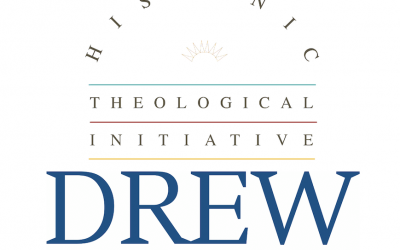Discusses her creative process, work and influences at Drew University event
February 2020 – Author and illustrator Mira Jacob presented to a packed crowd of Drew University students, staff, faculty and community members at the Writers@Drew event. Here’s a rundown of the afternoon.
Enlarge
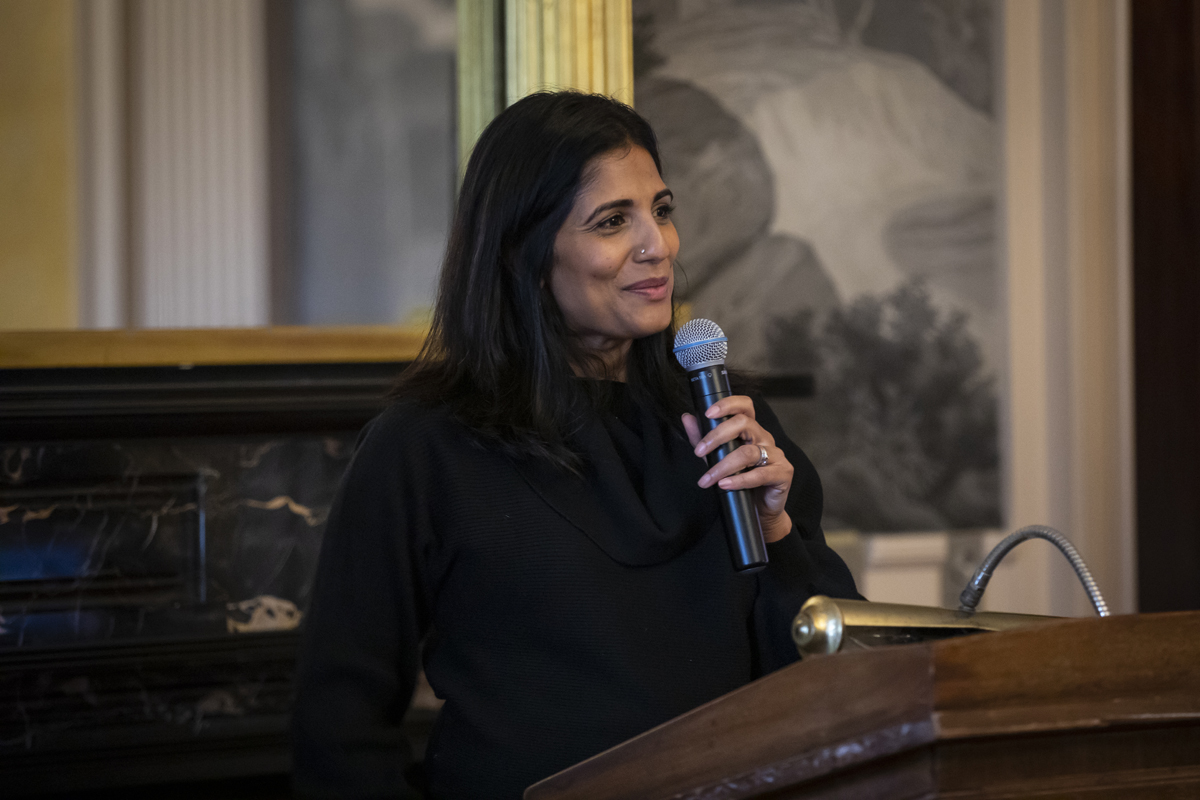
The path to her book
Jacob’s inspiration for her most recent book, Good Talk: A Memoir in Conversations, came from discussions with her son, who was 6 at the time.
“If you leave a young kid who is a mix between a brown person like me and a white person like my husband alone in a room with a bunch of Michael Jackson albums, he comes out and asks things like…’What color is Michael Jackson?'”
“And I’m just like, ‘Yeah…'”
She also lamented not explaining to him the 2014 Ferguson riots out of fear the concepts were too mature when he came home with incorrect understandings of the events. On the subway a few days later, her son innocently—and loudly—asked her if white people were afraid of brown people.
Her answer of sometimes seemed like the wrong one.
She wanted to capture the experience of being a brown woman with a mixed-race son in writing, but worried readers would choose “one word to annihilate a whole bridge because they can’t stand the fact that you’re trying to reach them and they can’t stand that that bridge is something they never want to cross.”
As such, she cut out drawings of her and her son’s illustrated faces, put them on top of the Michael Jackson albums and drew word bubbles of their conversation. The resultant graphic memoir is currently a finalist for the 2019 National Book Critics Circle Award for autobiography.
Enlarge
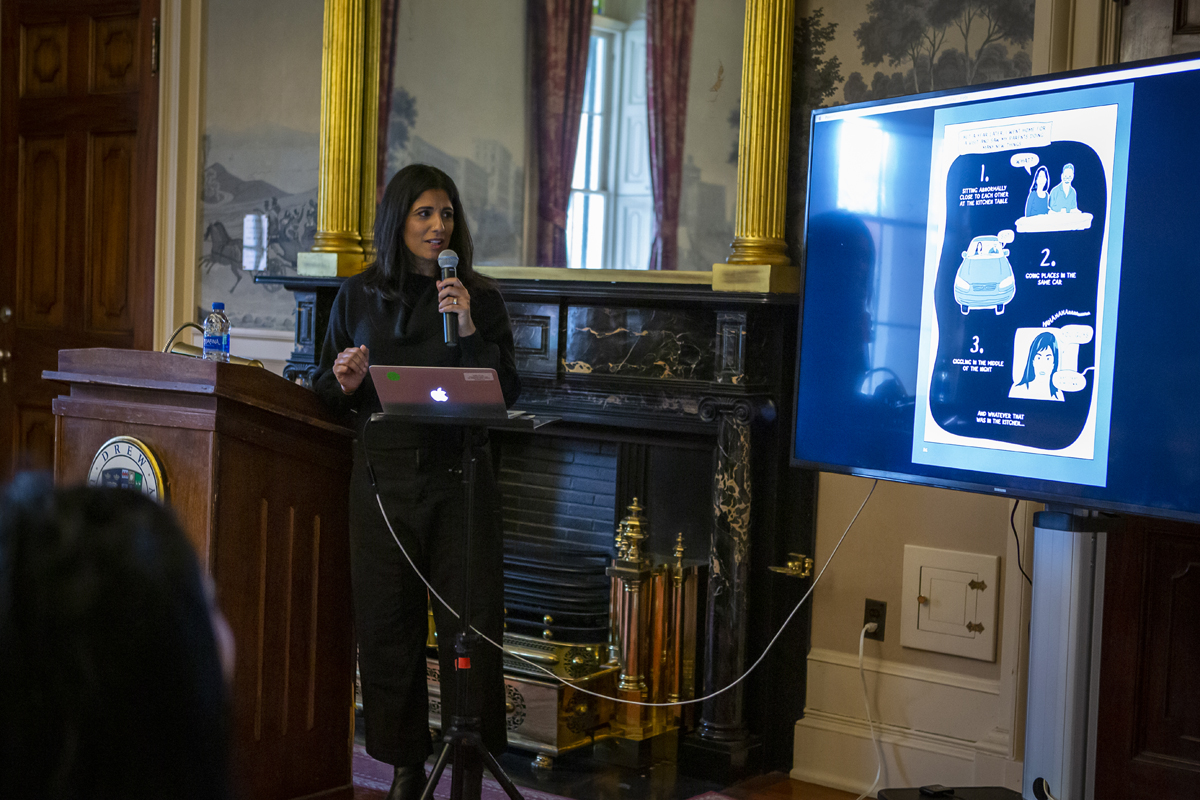
Three readings
With drawings from the pages of Good Talk on a screen beside her, Jacob supplied voices and accents for the various family members and friends depicted.
The chapter “American Love” recounts conversations with her Indian parents about the differences between an arranged marriage (“good,” according to her mother) and American love marriage (“passion, scandal, affairs, slinky outfits” and eventual divorce).
In “Love Marriage,” Jacob reflects on when she began to notice her parents seemed to be evolving from an arranged marriage into a love marriage. Finally, in “The Neuropsychologist,” she shows how she is pressured by her family to date an Indian friend of the family, a man who doesn’t return her call when he learns her skin is very dark.
Q&A
What influences her?
Listening to people talk to one another, she said.
Drawing laughs from the crowd, Jacob also admitted she loves to follow fighting couples around IKEA.
Enlarge
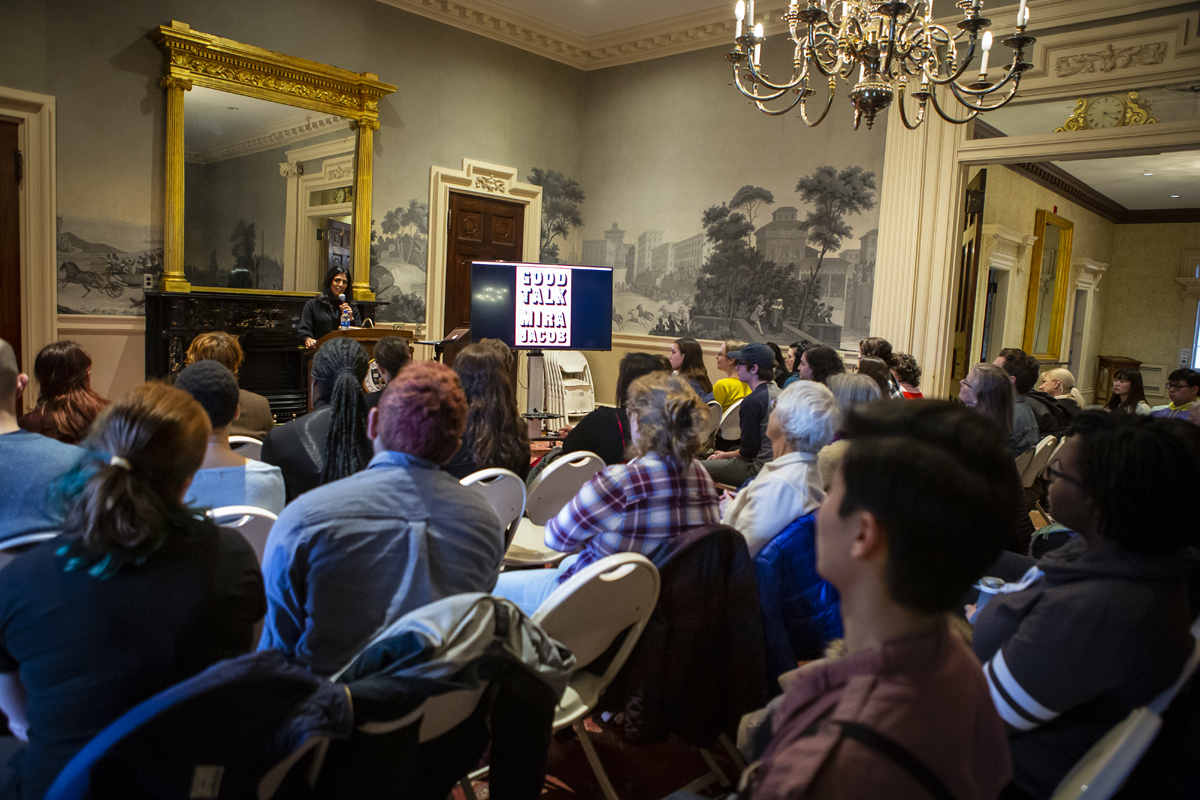
“I love listening to what people say and also the things they won’t say, the pauses where there’s an entire relationship loaded into the air.”
Why don’t her characters have expressions?
Practically, it takes less time to draw one face one way than many faces many different ways.
More poignantly, however, Jacob reflected on a conversation she had with an editor who asked her to draw “cry faces” for “sad” scenes.
“He said, ‘It’s just uncomfortable for me.’ This is a white man in his thirties. He said, ‘If you’re upset, I kind of need to see it.’
“That’s a voice that looks at violence that’s happening to all of us and says, ‘Maybe you’re not looking at this in the best light.’ And it’s like, well, what’s the best light for this violence, exactly? Is it the one where we don’t look at what you’re doing? Because that’s not the best for me.”
What does her son think of Good Talk?
“Having a 6-to-8 year old is like being in charge of a benevolent alien,” she said. “They’re just sort of like, ‘What is human? How does that work? Oh, hatred!'”
The one thing she told her son when the book came out was that he did not have to act out scenes he’s in upon request.
“If somebody needs you to…make them laugh about your funny thoughts about race, that’s on them, and…you never have to do it,” she told him.
Enlarge
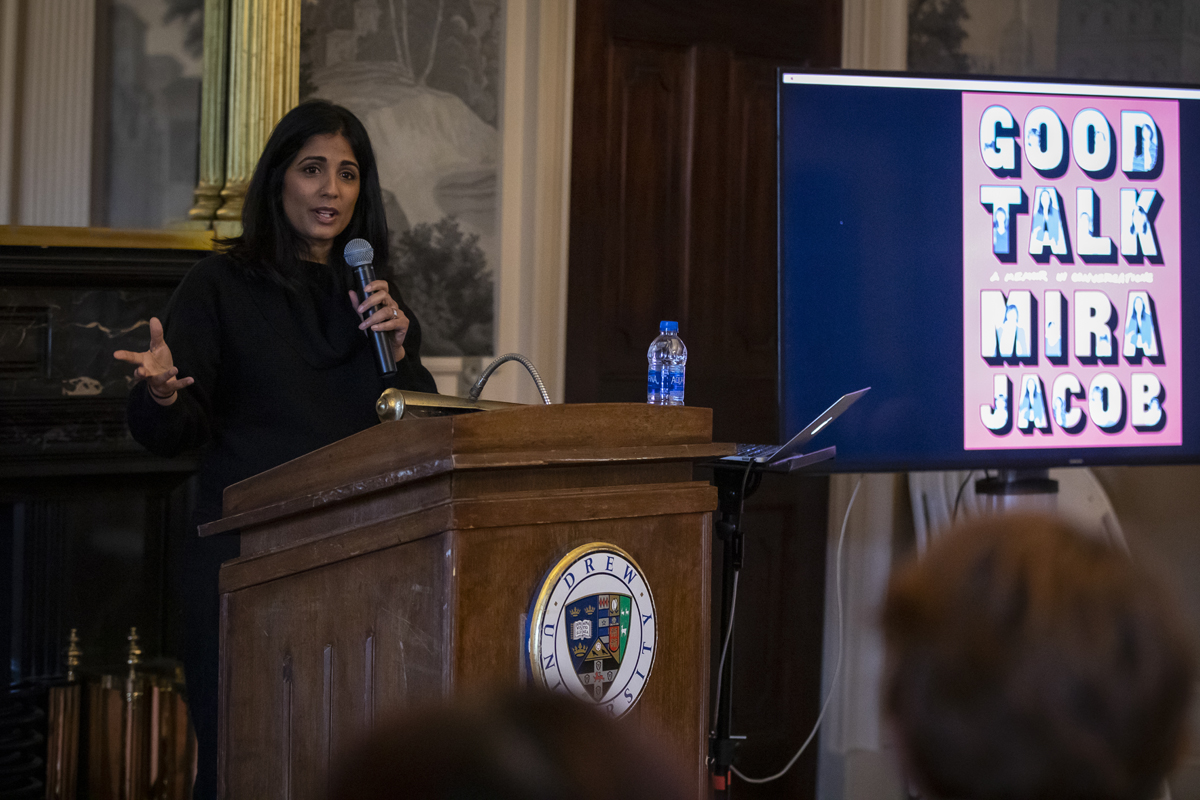
Who does she write for?
A Drew student of Haitian descent thanked Jacob for writing a book to which he can relate, and asked about her intended audience.
“(People of color) have things to talk about. We’re as real and complex as anyone else, so looking at that I kept thinking, What if you show people that? What if you show the ones who hold that in themselves?”
“I had ‘Write for us’ above my desk every day when I was writing. It’s you. It’s you, the person who hadn’t seen themselves (in writing) before. It’s exactly you.”
Writers@Drew events are co-sponsored by the Casement Fund and the English Department and are always free.

